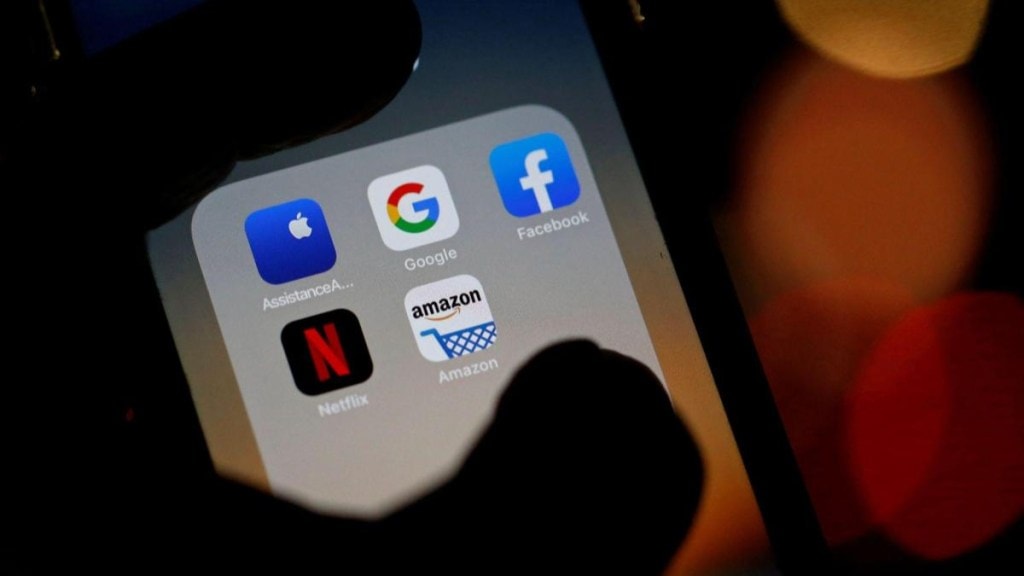The Halting International Relocation of Employment (HIRE) Act could sound the death knell for Indian IT exports, if it is passed by the US Senate. Anvitii Rai explains the nature and scope of the legislation, and why the US has a continuous cycle of protectionist stance against foreign workers
What is the HIRE Act 2025?
Introduced by Republican Senator Bernie Moreno, the HIRE Act 2025 echoes the US’s increasingly protectionist stance, as it aims to discourage American companies from outsourcing jobs by imposing a 25% tax penalty on payments made to foreign workers or entities when the services benefit US consumers. It further states that companies may not claim outsourcing expenses as deductions in US federal taxes, raising the effective cost even further. This revenue would go to a new Domestic Workforce Fund to support US apprenticeships, reskilling, and workforce development. To that end, the Act states that companies must report outsourcing payments clearly, and penalties for underreporting or non-compliance have been raised. This Act will be applicable across sectors—information technology (IT), customer support, back-office, design, R&D, etc.—essentially any service work that can be offshored. Imported services make up around 3% of the US’s total services consumption; however, despite being a very narrow percentage of total services, this portion is important for service exporters such as India and China.
What is the rationale behind the legislation?
When Senator Moreno introduced the HIRE Act, he declared, “While college grads in America struggle to find work, globalist politicians and C-Suite executives have spent decades shipping good-paying jobs overseas in pursuit of slave wages and immense profits—those days are over.”
His stance mirrors President Donald Trump’s protectionist outlook, rooted in the America First discourse that has defined his time in office. At the AI Summit at Washington in July, Trump had said, “Many of our largest tech companies have reaped the blessings of American freedom while building their factories in China, hiring workers in India, and slashing profits in Ireland… all the while dismissing and even censoring their fellow citizens… under President Trump, those days are over.” The measure may also target service imports from India and China, which resisted Trump’s trade deals during his tariff war.
What happens if it is passed?
Experts say the Bill is unlikely to be passed. However, if it is implemented, given the 25% penalty on compensation for foreign workers and ineligibility for tax deductions, US firms could face a spike in hiring costs. Compliance burden would also increase, as the Act mandates that companies report outsourcing costs. There could be industrial and political opposition to the proposal; however, it could be at varying degrees. For example, when Trump demanded that Apple should not assemble its devices in India and threatened 25% tariff, it did not outrightly comply, but affirmed a $500-billion investment in its US facilities. Finally, as this Act also applies to digital services, it will violate a WTO agreement that prevents member-nations from imposing duties. The moratorium has been renewed many times, most recently in early 2024, and will be reviewed in March 2026.
How will India be affected?
While service imports constitute only 3% of total services consumption for the US, there is much at stake for exporters like India. While the tariff war has dealt a blow to Indian exports, a blow to the services sector will be debilitating, especially for the IT industry. The US is the largest market for India’s IT services and global capability centres (GCCs), with many Indian IT majors such as TCS, Wipro, and Infosys having more than half their client base there. Many multinational corporations, including American stalwarts such as Microsoft, Google, JPMorgan, and Goldman Sachs also depend heavily on Indian GCCs, and have established more than 1,200 such centres in the country so far. If passed into law, the HIRE Act would affect around two million workers employed by these GCCs, leading to internal restructuring. The impact on the industry—which, according to HSBC estimates, could reach a valuation of $110 billion by 2030—may also shrink the number of contracts to Indian IT firms and compel US firms to adopt a near-shore or hybrid model.
Protectionist sentiments
A part of the US electorate has always leaned towards protectionism, and Trump’s campaigns have centred on this theme. Moreover, the American populace is sensitive to hiring trends. A 2024 Cato Institute survey showed 79% of Americans saw outsourcing as harmful for domestic manufacturing; 80% felt the US would be better off if more Americans worked in manufacturing; and 42% were not in favour of outsourcing as a whole. Official data show us why: Professional and business services firms added 158,000 fewer jobs in FY25, the US Department of Labor reported in March, while accounting for 17% of the jobs not added. Also, services employment continues to shrink. While the Institute for Supply Management’s non-manufacturing purchasing managers’ index was at 52 in August (a number over 50 indicates expansion), the services employment index remained at 46.5, signalling contraction in actual job creation within the sector, most likely due to outsourcing. The sectors most affected by outsourcing were IT services, customer support, back-office operations, and R&D functions.

